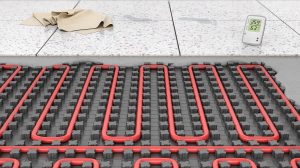 Helping clients determine ideal thermal management solutions, as well as ensuring proper function and regulation, is our main purpose when it comes to our line of work. Indeed, we want you to be able to get the most from your industrial applications without fear of falter or variance in reliability, and being able to do so in an eco-friendly manner is an added bonus. Still, not just any heat exchanger will suffice, and our intention is to provide knowledgeable insight into how to get started with the process. In today’s blog, the team at Noren Thermal Solutions in Taylor, TX explores the function behind passive and active cooling, as well as what that means for your business.
Helping clients determine ideal thermal management solutions, as well as ensuring proper function and regulation, is our main purpose when it comes to our line of work. Indeed, we want you to be able to get the most from your industrial applications without fear of falter or variance in reliability, and being able to do so in an eco-friendly manner is an added bonus. Still, not just any heat exchanger will suffice, and our intention is to provide knowledgeable insight into how to get started with the process. In today’s blog, the team at Noren Thermal Solutions in Taylor, TX explores the function behind passive and active cooling, as well as what that means for your business.
What is Convective Heat Transfer?
To begin identifying the possible heat exchangers and processes that could benefit your applications, you must first have an understanding of what you are looking at. Indeed, all of our products are designed with a few basic thermal management concepts in mind. Among these include spreading, movement, and dissipation.
Additionally, methods that our team utilizes to ensure waste heat spreading, movement, and dissipation include phase-change technology, thermoelectric means, and passive/active cooling. Today’s blog, in particular, will take a deep dive into the process of passive and active cooling.
Indeed, convection heat transfer refers to the process of transferring the waste energy from a solid, such as the heat source, to a fluid in order to provide subsequent application cooling. This can be accomplished through passive means or active means, and which process is most effective will depend largely on your unique parameters. To learn more about this process, reach out to our team today.
Understanding Natural Convection
When an application utilizes passive cooling, also known as natural convection, what is occurring is that the temperature differences between the fluid and the heat source create density variations, ultimately resulting in buoyancy forces that cause the fluid motion. In other words, the hotter volume begins to transfer heat toward the cooler volume, thus creating buoyancy forces that perpetuate the convection purpose without the need for an outside force. To learn more about this process and what applications can best benefit, reach out to our team today.
When Forced Convection is Necessary
In some instances, natural convection cannot suffice, and forced methods are pursued. Forced convection, also known as active cooling, occurs when a fluid is forced to flow over the heat source’s surface by means of an external source. This can include a fan or a pump. What’s more? This process generates an artificially induced current so that proper application cooling can ensue.
Contact Our Team
Contact Noren Thermal Solutions in Taylor, TX by calling 512-595-5700 to learn more about the benefits of passive and active cooling, and speak to a member of our team today.



